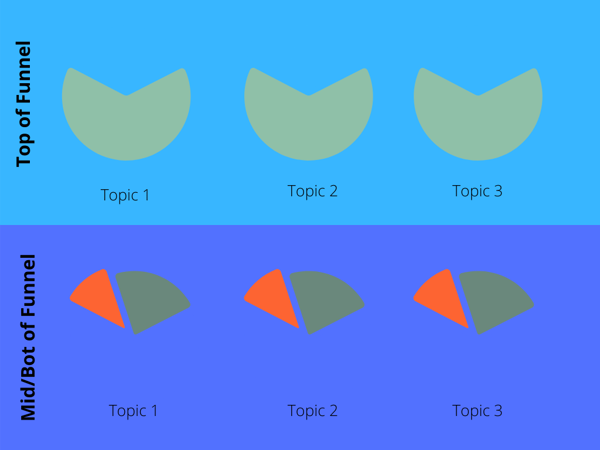In this episode of the GrowthTLDR, we kick off our first swipe file topic, where we discuss marketing and growth tactics that work.
We kick off the series with a common question growing companies have about content marketing - should you spend time creating content for the top of your funnel, or the middle and bottom of your funnel.
We talk about the five stages of awareness you should keep in mind when planning your content—the common debate between spending your time creating content for the top and middle of your funnel. And, we leave you with our recommendations on how you can solve for both.
The five stages of awareness are the perfect mental model to keep in mind when thinking about how you can map your content to different needs.
We discussed these previously with Talia Wolf during this episode.
1. You're initially unaware that you have a problem
2. You're aware you have a problem, but you don't know how to solve it
3. You're aware of both your problem and that there is a solution for it
4. You're product aware. You're aware of what products/services are available for your problem.
5. Finally, people want to buy your product and come to your website to do it.
On the podcast, Scott walks through a common purchase he makes and how he stepped through each of these stages.
For growing teams, they often debate where to focus their efforts. On the top of funnel stages, when people are unaware, they have a problem, and when they become aware of the problem, but don't know how to solve it.
Or, should they spend their time on the stages where the buyer is aware of their problem and actively looking for solutions.
Top of the funnel vs. Mid/Bottom of the funnel
The debate focuses on Google. Most channels are easy to map them to different stages in your funnel.
For example, you're rarely going to send top of the funnel content through email. If someone has signed up for your email list, they're aware of your company, and the solution you solve.
If someone discovers your brand through social media, like Facebook, or Instagram, it's unlikely they're researching solutions to a problem. They're at the top of your funnel.
Google is different. You can publish content that can attract people at all critical stages of the awareness model. So, where do you start?
Where do you start?
1. The case for Top of Funnel content
a. The benefits of focusing your efforts on content at the upper end of your funnel are it often has dual benefits. If you're able to generate enough traffic and monetize a small portion of it into leads or users, it can have a material impact on your demand engine.
b. It also has the added benefit of increasing awareness for your brand. You often need to think of this as 'dark attribution' because you might not see a direct impact on your funnel. Instead, you'll see causation where conversions increase over the long-term in other channels.
c. Top of the funnel content is fantastic for category creation. You can create thought leadership content that helps to shape your audience's point of view on why the problem you solve is worth solving.
2. Why focus on Mid/Bottom of Funnel Content
a. It converts! You're far more likely to stick to topics that are very relevant to your audience and have high conversion rates.
b. There will be fewer topics to cover if you focus on the mid/bottom of the funnel content, which can be to your advantage. It allows you to cover them more deeply and stand out from the competition.
The problem is, most people frame the problem as the below graphic:

You select topics and either build out the content for the awareness stages, or you focus efforts on the content at the middle and bottom stages for that topic.
What we've seen work is?
Listen to the full podcast for all the details.
1. Have strict guardrails in place for topics you plan to cover and review at regular intervals. You do this to ensure you don't create content that isn't relevant to your audience, which may result in increased traffic but has little business value.
2. Cover fewer topics, but build out the entire cluster. Each topic has a cluster of content that spreads across all stages of the awareness model and includes content in different formats.
3. Stack rank topics based on value to your brand. One way to do this is by looking at the total addressable search market for a topic. Research all of the keywords relevant to the topic, add up the available search traffic and use that as a means to prioritize.
The GrowthTLDR: You don't need to decide between the top, middle, or bottom of your funnel. Do fewer topics, and build out the entire cluster—prioritize topics based on a metric that's relevant to your brand.
Topics: content marketing, Podcast, Swipefile
 iTunes
iTunes Stitcher
Stitcher Spotify
Spotify